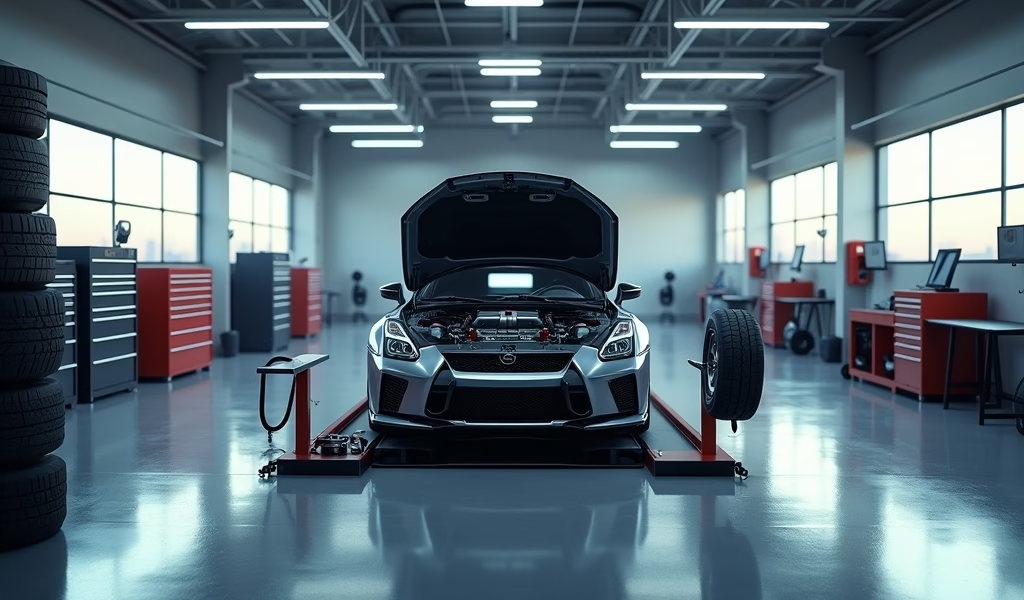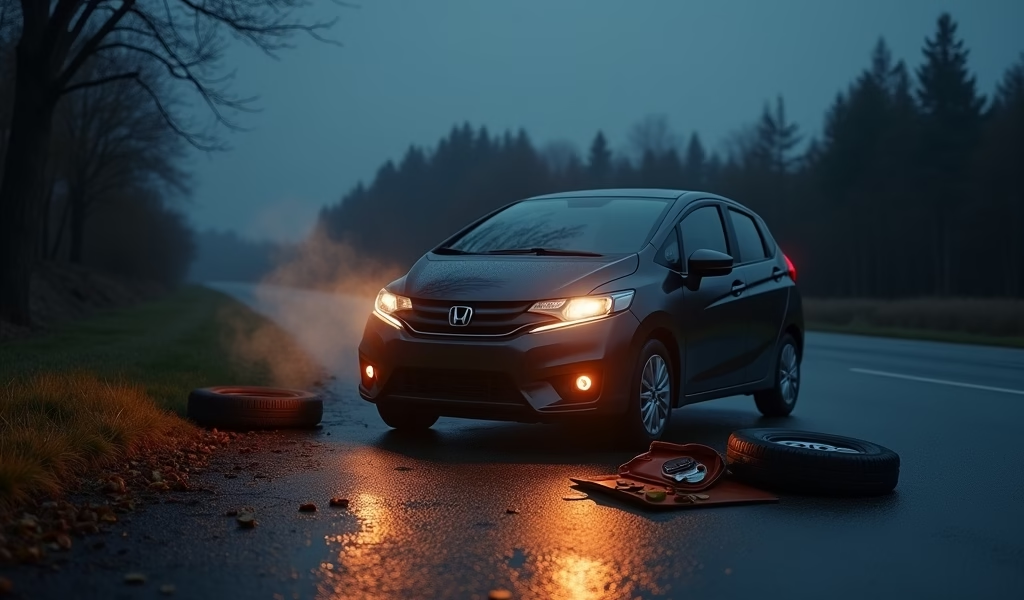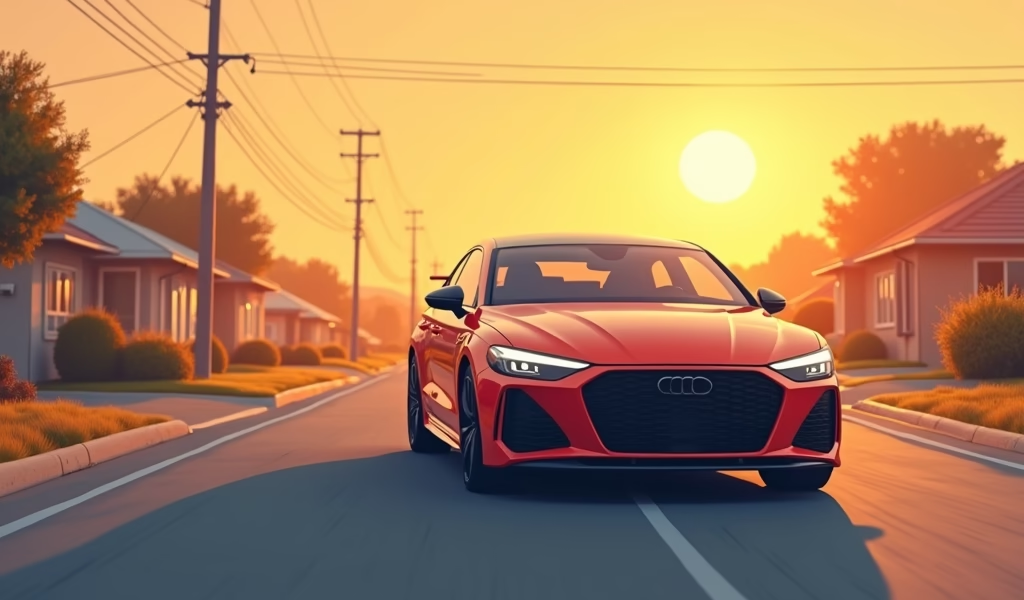Overview
This article provides five practical strategies for young drivers to reduce their car insurance costs: choosing insurance-friendly vehicles, using telematics/black box technology, adding experienced drivers to policies, completing advanced driver training, and optimizing payment methods with appropriate deductibles. Written from a mechanic’s perspective, it explains why insurers charge young drivers more and offers actionable advice to make coverage more affordable while maintaining proper coverage.
Table of Contents
- Understanding Insurance for Young Drivers
- Why Insurance Costs More for Young Drivers
- Tip 1: Choose the Right Car
- Tip 2: Consider Telematics or Black Box Insurance
- Tip 3: Add an Experienced Driver to Your Policy
- Tip 4: Complete Additional Driver Training
- Tip 5: Pay Annually and Increase Your Excess
- Conclusion
- Frequently Asked Questions
Understanding Insurance for Young Drivers
Remember that first time you sat behind the wheel, hands at ten and two, heart racing faster than the engine you were about to fire up? That exhilarating mixture of freedom and fear is something every young driver experiences. Unfortunately, what follows shortly after is often a rude awakening when shopping for insurance for young drivers – premiums so high they could make your freshly printed license curl at the edges!
As a mechanic who’s spent decades watching young folks drive off the lot in their first cars, I’ve seen the sticker shock that comes with those initial insurance quotes. It’s like watching someone bite into what they think is a chocolate chip cookie only to discover it’s raisin – that level of disappointment is palpable.
But fear not! Just as there’s more than one way to fix a timing belt, there are multiple approaches to making insurance more affordable for young drivers. In my 25 years working under the hood and advising new drivers, I’ve collected some tried-and-true methods that can help turn those sky-high premiums into something more down-to-earth.
Before we dive into my top 5 tips for tackling insurance for young drivers, let’s understand why insurance companies see young drivers as walking (or rather, driving) risk factors, and how we can work within that system to find you coverage that won’t require a second mortgage.
Why Insurance Costs More for Young Drivers
Insurance companies and young drivers mix about as well as water and engine oil – they naturally want to separate. But why? It’s not personal; it’s statistical. According to research from the Insurance Institute for Highway Safety, drivers aged 16-19 are nearly three times more likely to be in a fatal crash than drivers over 20. Insurance is all about risk assessment, and young drivers simply represent a higher risk pool.
Think of it this way: when I’m diagnosing a car problem, I rely on patterns I’ve seen thousands of times. Insurance companies do the same thing with driver data. Young drivers haven’t accumulated enough safe miles to prove they’re not a risk, so they start in the “high risk” category until proven otherwise.
Three key factors make insurance companies nervous about young drivers:
- Inexperience behind the wheel (you wouldn’t expect a first-year apprentice to rebuild a transmission, would you?)
- Higher likelihood of risk-taking behaviors (the automotive equivalent of “hold my beer and watch this”)
- Greater susceptibility to distractions (that text message is never as important as the road ahead)
But don’t hang up your keys just yet! Just as I’ve seen countless “hopeless” engines roar back to life with the right approach, I’ve helped many young drivers find affordable insurance options by working smarter, not harder. Let’s get under the hood of this problem and look at five strategies that really work.

Tip 1: Choose the Right Car
Choosing the right first car is like selecting the perfect wrench for a job – get it wrong, and you’re making things unnecessarily difficult. When it comes to best insurance for young drivers, your vehicle choice can be the difference between affordable premiums and daylight robbery.
I’ll never forget young Mike who rolled into my shop last year, proud as can be in his newly purchased 350Z. Beautiful car, terrible choice for a 17-year-old’s insurance rates. After seeing his first premium quote (which cost more than he paid for the car itself!), we had a heart-to-heart about vehicle selection.
Insurance companies place vehicles in groups from 1-50. Lower group numbers mean lower premiums. It’s that simple. So what makes a car insurance-friendly for young drivers?
- Smaller engine size (think 1.0-1.4 liter, not the 3.0+ monsters)
- Less horsepower (your first car should be a loyal puppy, not a wild stallion)
- Good safety ratings (protecting both you and the insurer’s wallet)
- Common models with easily available parts (exotic cars = exotic repair costs)
Cars that typically fall into lower insurance groups include the Ford Fiesta, Volkswagen Polo, and Vauxhall Corsa. These aren’t just good for insurance—they’re also generally reliable, economical, and perfect for learning proper maintenance habits.
Have your heart set on something sportier? I understand the temptation, but ask yourself: would you rather drive a modest car with affordable insurance or own a showpiece that never leaves the driveway because you can’t afford to insure it? Sometimes the wise mechanic knows when not to upgrade.
Tip 2: Consider Telematics or Black Box Insurance
If your car had a way to prove it was being driven carefully, wouldn’t you want that information shared with your insurer? That’s exactly what telematics (or “black box insurance”) offers, and it’s revolutionizing insurance for young drivers the way electronic diagnostics changed my profession.
Think of telematics as having a master mechanic riding shotgun, monitoring how you handle your vehicle. The black box or smartphone app tracks driving behaviors like:
- Speed (staying within limits is like changing your oil regularly—basic maintenance)
- Acceleration and braking (gentle inputs are easier on both car components and insurance rates)
- Time of day (avoiding the road during high-risk hours, typically late night)
- Cornering (taking turns like you’re balancing a cup of water on the dashboard)
I recommended telematics to my neighbor’s daughter Sarah last year, and her premium dropped by nearly 40% after three months of demonstrating good driving habits. The initial discount was modest, but the rewards for proven safe driving added up faster than rust on a winter road.
According to research from insurance comparison sites, young drivers can save an average of 25-30% with telematics policies. Those savings compound when you maintain good driving habits year after year, building a positive driving history much faster than with traditional insurance.
Does it feel a bit like having a driving instructor permanently in your car? Perhaps. But just as my apprentices work under supervision before earning my trust with complex repairs, proving yourself to insurers this way can fast-track you to lower premiums. And unlike that driving instructor, the black box won’t clear its throat disapprovingly when you make a minor mistake!
Tip 3: Add an Experienced Driver to Your Policy
When a novice mechanic tackles a difficult job in my shop, I often pair them with a seasoned pro. Insurance companies view policies the same way—adding an experienced driver with a clean record to your policy is like having a master technician cosign your work.
This approach, known as adding a named driver, can significantly reduce premiums for cheap insurance for young drivers. The insurance company sees that the vehicle will sometimes be driven by someone with a proven safety record, which dilutes the risk pool.
However—and I cannot stress this enough—this is NOT the same as “fronting,” which is about as advisable as using chewing gum to fix a radiator leak. Fronting occurs when a parent or older driver is dishonestly listed as the main driver when the young person actually does most of the driving. This is insurance fraud, plain and simple, and can result in:
- Claims being rejected faster than water in an oil pan
- Your insurance policy being canceled immediately
- Difficulty obtaining any insurance in the future
- Potential legal consequences that stick to your record like burned oil on a hot manifold
The legitimate approach is to add a parent or experienced driver as a named driver when they genuinely will use the car occasionally. My daughter’s insurance dropped by 20% when we added her mother as a named driver—and yes, her mother does sometimes borrow the car for grocery runs.
Remember: insurance is built on trust. Just as I trust my customers to tell me the truth about how their car has been maintained, insurers trust your declarations about who drives your vehicle. Keep it honest, and this strategy works beautifully without risking your financial future.

Tip 4: Complete Additional Driver Training
In my workshop, I’ve always said there’s no such thing as too much training. The mechanics who seek extra certifications and hands-on experience consistently outperform those who stop learning after the basics. The same principle applies beautifully to driving and insurance rates.
Advanced driver training courses, like the Pass Plus scheme in the UK or defensive driving courses in the US, can make you a more confident, competent driver while simultaneously signaling to insurers that you’re serious about safety. It’s the equivalent of showing up to a job interview with extra qualifications—you immediately stand out from the crowd.
When my son completed his Pass Plus after getting his license, we saw a 15% reduction in his insurance premium. The course cost £180, but the insurance savings in the first year alone covered that investment, not to mention the lifelong benefits of advanced driving skills.
These courses typically cover:
- Driving in challenging conditions (night, rain, and even snow)
- Motorway/highway driving techniques
- Rural road navigation skills
- City driving and complex traffic management
- Risk perception and hazard awareness
Not every insurer offers discounts for these qualifications, so it’s worth shopping around or asking specifically about such programs. Think of it as calling different parts suppliers to get the best deal on quality components—a little research goes a long way.
Beyond the immediate insurance benefits, these courses teach skills that could potentially save your life or prevent a costly accident. As I tell everyone who brings their vehicle to my shop, preventative maintenance is always cheaper than emergency repair—and the same goes for your driving record.
Tip 5: Pay Annually and Increase Your Excess
Insurance companies love predictability almost as much as I love a well-organized toolbox. When you pay your premium annually instead of monthly, you’re giving the insurer certainty—and they reward that with lower overall costs.
Monthly payments typically include interest and administrative fees that can add up to 10-15% to your total annual cost. It’s similar to buying parts on credit versus saving up for quality components—the financing always costs you extra in the long run.
I understand that coming up with a lump sum can be challenging for young drivers. One approach I’ve seen work well is setting aside money each month in a dedicated savings account until you have enough for the annual payment. It requires discipline, but isn’t that also a quality that makes for safer drivers?
Another powerful lever you can pull is increasing your voluntary excess. This is the amount you agree to pay toward any claim before the insurance kicks in. By volunteering to take on more financial risk in the event of a claim, you’re demonstrating confidence in your driving abilities.
But—and this is crucial—never set an excess higher than you can actually afford to pay. It’s like over-torquing a bolt; it might seem secure until you actually need to remove it, then you’re in trouble.
I advised my workshop apprentice Jake to increase his excess from £250 to £500, which reduced his annual premium by nearly £200. Since he’s maintained a claim-free record for three years now, that decision has saved him £600 without costing him anything.
When you combine these two approaches—paying annually and setting an appropriate voluntary excess—you’re attacking high premiums from two directions. It’s like diagnosing an engine problem by checking both mechanical and electrical systems simultaneously—efficient and effective.
Conclusion
Navigating insurance for young drivers is a lot like maintaining your first car—it seems daunting at first, but with the right approach and a bit of knowledge, you can keep things running smoothly without breaking the bank.
We’ve covered the five best strategies I’ve seen work time and again for young drivers looking to make insurance more affordable:
- Choosing an insurance-friendly vehicle (leave the sports cars for your mid-life crisis)
- Embracing telematics to prove your driving skills deserve lower rates
- Adding experienced drivers (legitimately) to your policy
- Investing in additional driver training that pays for itself
- Paying annually and setting a sensible voluntary excess
Remember, just as no car stays in perfect condition without regular maintenance, your insurance situation requires periodic review. As you build experience and a clean driving record, don’t settle for automatic renewals—shop around, ask for better rates, and leverage your improving driver profile.
The road to affordable insurance as a young driver might have some bumps along the way, but with persistence and these practical strategies, you’ll find your journey gets smoother and less expensive with each passing mile. Stay safe out there, and remember—both cars and insurance policies perform better with a little expert attention!
Frequently Asked Questions
At what age does car insurance typically become cheaper?
Insurance rates usually begin to decrease noticeably around age 25, assuming you maintain a clean driving record. Some insurers start reducing premiums gradually from age 21 onward.
Can I be on my parents’ insurance policy instead of getting my own?
Yes, if you live at the same address as your parents, being added to their policy is often cheaper than a separate policy. This works best when the vehicle is jointly used by family members.
Does the color of my car affect my insurance premium?
No, contrary to popular belief, car color does not directly affect insurance rates. Factors like make, model, engine size, and safety features have much greater impact on premiums.
How much can I save with a black box/telematics policy?
Young drivers typically save between 20-40% with telematics policies, depending on their driving habits. The savings increase with consistently safe driving patterns over time.
Will taking a defensive driving course lower my insurance immediately?
Not all insurers offer immediate discounts for defensive driving courses, so check before enrolling. Those that do typically provide 5-15% reductions when you present your course completion certificate.

